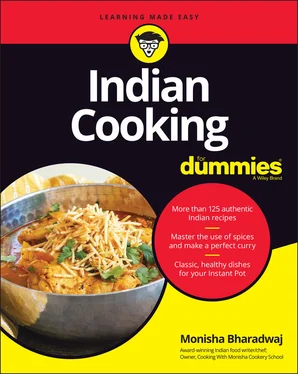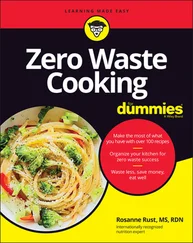Trade, migration, and conquest: I don’t like to use the word authentic when speaking about Indian cooking. Although the cuisine is ancient, there are so many foreign influences that make it what it is today. (I explain more about this concept in the sections that follow.) At the heart of the cuisine is the world’s need for India’s spices and what each of the foreign powers brought with them in exchange. Pepper, the spice that started it all, is said to have changed the history of the world.
The North: Of Conquest, Kings, and Empire
If you travel through North India, you’ll be struck by the beautiful Islamic and British architecture in many cities. Over many centuries, parts of this vast region of India have been ruled by the Greeks, the Mughals, and the British. The food you’ll eat here is a result of these conquests, and perhaps Mughal cooking was the one that changed the culinary scene the most.
Delhi: The Mughals and Islamic influences
New Delhi is the modern capital of India. It has a cosmopolitan population of politicians, diplomats, and business officials, and the cuisine reflects the diversity of its past history. The streets are lined with stalls selling tandoor cooked foods, crisp samosas, and rich biryanis. As evening turns to dusk, the city’s rich and famous dress up in their best silks to attend countless cocktail and dinner parties where tables creak with the best of Mughlai food.
This is a legacy left by the Mughal rulers who reigned over a large part of India from their capital Delhi from 1526, before the British took over. The cuisine was influenced by Persian and Turkish cooking as the rulers had ties with these cultures (the official language of the Mughal rulers was Persian). Today’s korma, biryani, kofta, and kebab are a Mughal legacy and have become mainstream North Indian dishes. Traces of Mughlai cooking can be seen in some southern cities such as Hyderabad, where the Mughal Empire extended to.
Because of the Islamic origins of this style of cooking, and in reverence to the many Hindu courtiers that advised the kings, pork and beef dishes were not included. Indian restaurants offering Mughlai food today serve it up as a mild, delicious cuisine based on creamy or nut-based curries laced with dried fruits and rich spices, such as saffron and cardamom. Desserts are flavored with rose water and pistachios, and the recipes are typically richer than those found in other parts of India. This is an indulgent cuisine; in India, it’s seen as a treat.
The foothills of the Himalayas: Basmati rice
Although India grows many different varieties of rice, basmati is the best known outside its country of origin. This beautiful, aromatic (the name basmati means “fragrant”), long-grained rice finds the climatic and soil conditions at the bases of the Himalayan mountain range ideal.
In India, basmati rice is considered special and is more expensive than other rice varieties. This is because it’s a uniquely slender grain that cooks up fluffy, a trait that’s valued in Indian cooking. To enhance this quality of cooking into separate grains, it’s aged in warehouses where conditions such as light, air, temperature, and humidity are highly controlled. This results in each grain drying and forming a light skin, which can effectively seal the grain and help lock in the starch. The aging process can take anywhere from a year and a half to two years, the longer period yielding a more expensive rice.
When the British divided India at the time of independence in 1947, a part of this basmati-growing territory fell in the newly formed country of Pakistan. The cuisines of both countries celebrate this superlative grain in dishes such as biryani and pulao.
Punjab and the Partition of India
A number of Indians who live outside of India are Punjabi in origin. Around the time of Partition, when the state of Punjab got divided, Hindus living in the newly formed country of Pakistan and Muslims living in the Indian part of Punjab crossed borders, giving rise to one of the world’s largest human migrations. The chaos, genocide, and displacement meant that some people fled to postwar Britain where jobs were available along with the opportunity to begin life anew.
They brought with them the unique food of the North — so much so that, today, in many parts of the world, when someone talks of Indian cooking, it’s Punjabi food that they’re referring to. Rich onion- and tomato-flavored curries, aloo gobi, saag paneer, or the delicious tandoori foods (cooked slowly in a clay oven called the tandoor ), even the naans and parathas, all came from Punjab.
Ingredients that you would commonly find in a Punjabi kitchen are beans such as chickpeas and red kidney beans; black lentils; vegetables such as cauliflower, potatoes, peas, and turnips; and whole-wheat flour to make many kinds of breads. Punjab grows a lot of wheat and was once known as the granary of India.
There are many stories about how tandoori cooking came to be associated with India. It was already being used in undivided Punjab and, after Partition, found its way to the Indian side of the state. Because a tandoor is quite large and needs to be brought to the right temperature over some time (as you do with a barbecue), it was impractical for every Punjabi home to fire one up every evening. Communal tandoors were set up, with each village having one. People prepared their dough at home and took it to the village tandoor to have their rotis cooked. Eventually, commercial tandoori shops offered cooked breads to take away, and the communal tandoor became less of a ritual; today, only a few villages have one.
Kashmir and its saffron fields
Kashmir is one of the most beautiful states of India, resplendent with green valleys, flowing waterfalls, pine forests, and fruit-filled orchards. Due to its proximity to the Himalayas, Kashmir was the natural passage to India for many invaders. Its cuisine is, therefore, a mix of Indian, Persian, and Afghan styles.
The cooking of Kashmir is best showcased in the Wazawan or traditional Kashmiri feast. Even today, the master chefs of Kashmir are hailed as the descendants of the traditional chefs from Samarkand, the Wazas who came to India with the ruler Timur when he entered India in the 15th century. The royal Wazawan, comprising 36 courses, is a feast that few can get through. The meal begins with the ritual of washing the hands. Then the tramis (dishes filled with food) begin to arrive. The entrees are eaten with a sticky, dense variety of rice, which is prized. Much of the Wazawan is meat-based because this is a sign of affluence, but vegetarian dishes with lotus root or potatoes are also served.
Two distinct groups of people live in Kashmir — the Muslims and the Hindus — and their cuisines are also distinct. Spices such as dried ginger, ground fennel, and saffron, which grow in Kashmir, are used. This state is known for its quality saffron. The bright red stigma of the saffron crocus flower produces the spice, which is considered the most expensive one in the world. The cost is due to the labor-intensive harvesting process where around 200,000 stigmas need to be collected to make up a pound of saffron!
Saffron is even used in the tea in Kashmir. Kahwa is green tea flavored with saffron, spices, and nuts.
The East: Tea Plantations, Tempting Sweets, and Treasures of the Sea
The food of East India is also influenced by trade and colonization. Parts of this region share a border with neighboring China and Myanmar, so those influences are evident; you’ll find ingredients such as pork, bamboo shoots, and soya beans. Don’t be fooled into thinking that all the food here is gentle and mild — this region is also home to one of the world’s most fiery chilies, the bhut jolokia, or ghost chile, which is so hot that one little taste and you yourself will become a ghost.
Читать дальше












